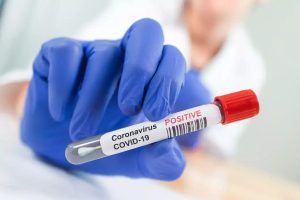COVID-19 Resurgence in India: As of June 2, 2025, India is witnessing a concerning resurgence of COVID-19 infections, signaling what health experts fear could be the onset of another wave. According to the latest data released by the Union Ministry of Health and Family Welfare, the country has reported a total of 3,961 active COVID-19 cases, a significant rise compared to figures observed just a few weeks ago. While this number might appear moderate in comparison to the devastating peaks witnessed in 2020 and 2021, the current upward trend is being closely monitored by medical authorities and state governments alike, especially as the increase is not isolated to one region but is spread across multiple states including Kerala, Maharashtra, Delhi, Gujarat, West Bengal, and Karnataka.

This sudden surge in infections is being attributed to a combination of multiple factors. First and foremost is waning immunity among the population, especially those who received their last vaccine dose more than a year ago and have not taken a booster. While the national vaccination campaign succeeded in administering over two billion doses by mid-2023, recent trends indicate a plateau in booster shot uptake, particularly in rural and semi-urban areas. Experts warn that immunity—whether from vaccination or natural infection—tends to diminish over time, making individuals more susceptible to reinfection.


Secondly, there is a visible relaxation in public behavior and safety protocols. In most parts of India, mask mandates have been lifted, and COVID-appropriate behavior has all but vanished from everyday public life. Public transport systems are crowded, marketplaces are bustling, and large-scale weddings and social functions are being organized with minimal health precautions. The return to pre-pandemic normalcy, while welcome from an economic and social standpoint, is proving to be fertile ground for viral resurgence, especially in densely populated metros.
The third and perhaps most alarming contributor to the current spike is the emergence of new COVID-19 variants. As per recent findings from genomic sequencing labs across the country, a new subvariant of Omicron—NB.1.8.1—has been detected in several Indian states. While preliminary data suggest that this subvariant may not cause severe disease in most vaccinated individuals, it is believed to be highly transmissible, which explains the rapid increase in case numbers across geographically distant regions. The World Health Organization (WHO) has placed this variant under monitoring, and Indian epidemiologists are urging caution until further data becomes available.
COVID-19 Resurgence in India: State-Wise Overview of Rising Cases
Kerala, Maharashtra, and Delhi are emerging as major hotspots. Kerala currently leads in active case numbers, driven by urban clusters in cities like Thiruvananthapuram, Kochi, and Kozhikode. Maharashtra follows closely, with Mumbai and Pune showing increasing daily case counts. In Delhi, where public interactions remain high and mask usage has dropped significantly, the national capital has recorded over 82 COVID-related deaths since January 2025. Other states such as Gujarat, West Bengal, and Karnataka are witnessing early signs of escalation as well.


Ahmedabad recently reported its first COVID-related fatality of the year, a 47-year-old woman with multiple comorbidities. The incident has prompted Gujarat’s health department to review hospital preparedness and relaunch public awareness campaigns.
Hospitalizations and Public Health Preparedness
One of the more troubling aspects of this resurgence is the slow yet noticeable increase in hospital admissions. Although most new infections are reportedly mild or asymptomatic, hospitals in affected areas are seeing a rise in patients with breathing difficulties and pre-existing health issues.
In response, the Ministry of Health has advised all states and union territories to conduct mock drills, reassess oxygen supply systems, ensure availability of ICU beds, and maintain a steady stock of antiviral medications. Isolation wards, many of which had been dismantled or converted back to regular use, are being reactivated in anticipation of a further surge.
Several state governments are also initiating genome surveillance to track and trace the spread of NB.1.8.1 and other variants. Testing has been ramped up in high-density areas, with some localities in Mumbai, Delhi, and Kochi launching door-to-door screening for symptomatic individuals.
Vaccine Hesitancy and Booster Drive Challenges
Despite having an expansive vaccination program in place, India continues to face challenges in its booster dose campaign. Data from the CoWIN platform suggests that while initial two-dose coverage remains high, uptake of precautionary doses has stagnated at around 37% nationally. Among those over 60 years of age, this figure rises to just 53%, well below the desired target.


Vaccine hesitancy, particularly among rural populations and some tribal regions, is being fueled by misinformation, fatigue, and a sense of complacency. Public health officials are renewing efforts to address these issues through community outreach programs, localized mobile vaccination units, and partnerships with NGOs and faith-based organizations.
Variants Under Watch: The NB.1.8.1 Concern
The newly detected NB.1.8.1 subvariant is under close examination by both Indian and international health agencies. Early reports indicate it possesses a higher transmissibility rate than previous Omicron sublineages but has not yet demonstrated an increased ability to evade vaccine-induced immunity entirely. However, it is still too early to rule out future risks.
According to the Indian SARS-CoV-2 Genomics Consortium (INSACOG), at least 148 samples of NB.1.8.1 have been sequenced across six states. The mutation profile of this subvariant suggests enhanced spike protein changes that could improve receptor binding, a feature that made the original Omicron and Delta variants so widespread.
Government Measures and Policy Directives
So far, the central government has not announced any nationwide restrictions, but the Health Ministry has issued a fresh set of advisories. These include reinforcing mask use in public transport and indoor public spaces, avoiding large gatherings in high-case-load districts, and reintroducing thermal screening at airports and major railway stations.
States have also been asked to update their COVID-19 control plans and ensure all districts have an emergency response team on standby. Some urban local bodies in Kerala, Maharashtra, and West Bengal are revisiting containment zone strategies and have started localized lockdowns in apartment complexes and housing societies with cluster outbreaks.
Public Response and Media Awareness
The Indian public’s reaction to the current spike has been mixed. While some remain vigilant and are reinstating personal safety practices, many others express pandemic fatigue. Media outlets have ramped up coverage, emphasizing verified information and expert opinions to combat rising misinformation.
Social media platforms are being monitored more rigorously by the Ministry of Electronics and IT to flag and remove fake news about vaccine side effects or unfounded variant panic. Influencers, public figures, and local celebrities are being encouraged to spread awareness using multilingual messaging.
Conclusion: A Call for Renewed Vigilance
As India grapples with this fresh spike in COVID-19 cases, the coming weeks will prove crucial. The current situation, while not yet critical, is a reminder that the virus continues to evolve and that public health must remain a national priority. With the right mix of science-based policy, community awareness, and government readiness, India can contain the spread before it spirals into a full-blown wave.
Public cooperation remains key. Authorities urge citizens to get vaccinated, avoid misinformation, and adhere to basic safety norms. The COVID-19 pandemic may no longer dominate headlines daily, but its shadow still lingers—a silent warning that vigilance, not complacency, will shape the nation’s path forward.
Do Follow:
-
Ministry of Health and Family Welfare (MoHFW) – COVID-19 Dashboard
This dashboard offers real-time data on COVID-19 cases across India, including state-wise statistics for West Bengal.
🔗 https://covid19dashboard.mohfw.gov.in/ -
Press Information Bureau (PIB) – COVID-19 Press Releases
The PIB provides official press releases and updates from the Government of India regarding COVID-19, including information on new variants like JN.1.
🔗 https://www.pib.gov.in/PressReleseDetail.aspx?PRID=1987840 -
Integrated Disease Surveillance Programme (IDSP) – Ministry of Health and Family Welfare
IDSP monitors disease outbreaks and provides alerts and updates, including those related to COVID-19.
🔗 https://idsp.mohfw.gov.in/ -
Indian Council of Medical Research (ICMR)
ICMR conducts and disseminates research on various health issues, including COVID-19 variants and their impact.
🔗 https://www.icmr.gov.in/ -
INSACOG (Indian SARS-CoV-2 Genomics Consortium)
INSACOG monitors the genomic variations in SARS-CoV-2, including tracking new variants like JN.1.
🔗 https://insacog.gov.in/ -
Government of West Bengal – Department of Health & Family Welfare
The official portal provides state-specific health advisories, updates, and resources related to COVID-19.
🔗 https://www.wbhealth.gov.in/ -
Press Information Bureau (PIB) – COVID-19 Updates
Regular bulletins and updates on the COVID-19 situation in India, including variant tracking and health advisories.
🔗 https://pib.gov.in/PressReleasePage.aspx?PRID=1778959
Also read: Home | Channel 6 Network – Latest News, Breaking Updates: Politics, Business, Tech & More

